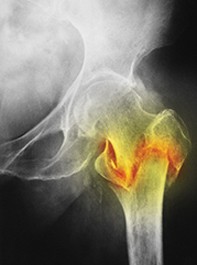Peer Reviewed
Drug update
Zoledronic acid for the treatment of osteoporosis
Abstract
Zoledronic acid (Aclasta) is a major addition to the armamentarium of osteoporosis treatment, being both effective and requiring only annual intravenous infusions, therefore eliminating some of the drawbacks or inconveniences of oral bisphosphonate therapy.
Key Points
Zoledronic acid (Aclasta) is a potent, intravenous aminobisphosphonate administered once yearly for the treatment of osteoporosis. Bisphosphonates are synthetic analogues of pyrophosphate that bind with high affinity to bone mineral. They are taken up by osteoclasts, the bone-resorbing cells, during bone resorption. Once inside the osteoclasts, they inhibit a critical enzyme called farnesyl pyrophosphate synthase (FPPS). This results in an inhibition of bone resorption through reduction of the activity and recruitment of osteoclasts, and increased apoptosis. Zoledronic acid is the bisphosphonate with the strongest affinity for bone and the highest inhibitory activity of FPPS.
Purchase the PDF version of this article
Already a subscriber? Login here.

